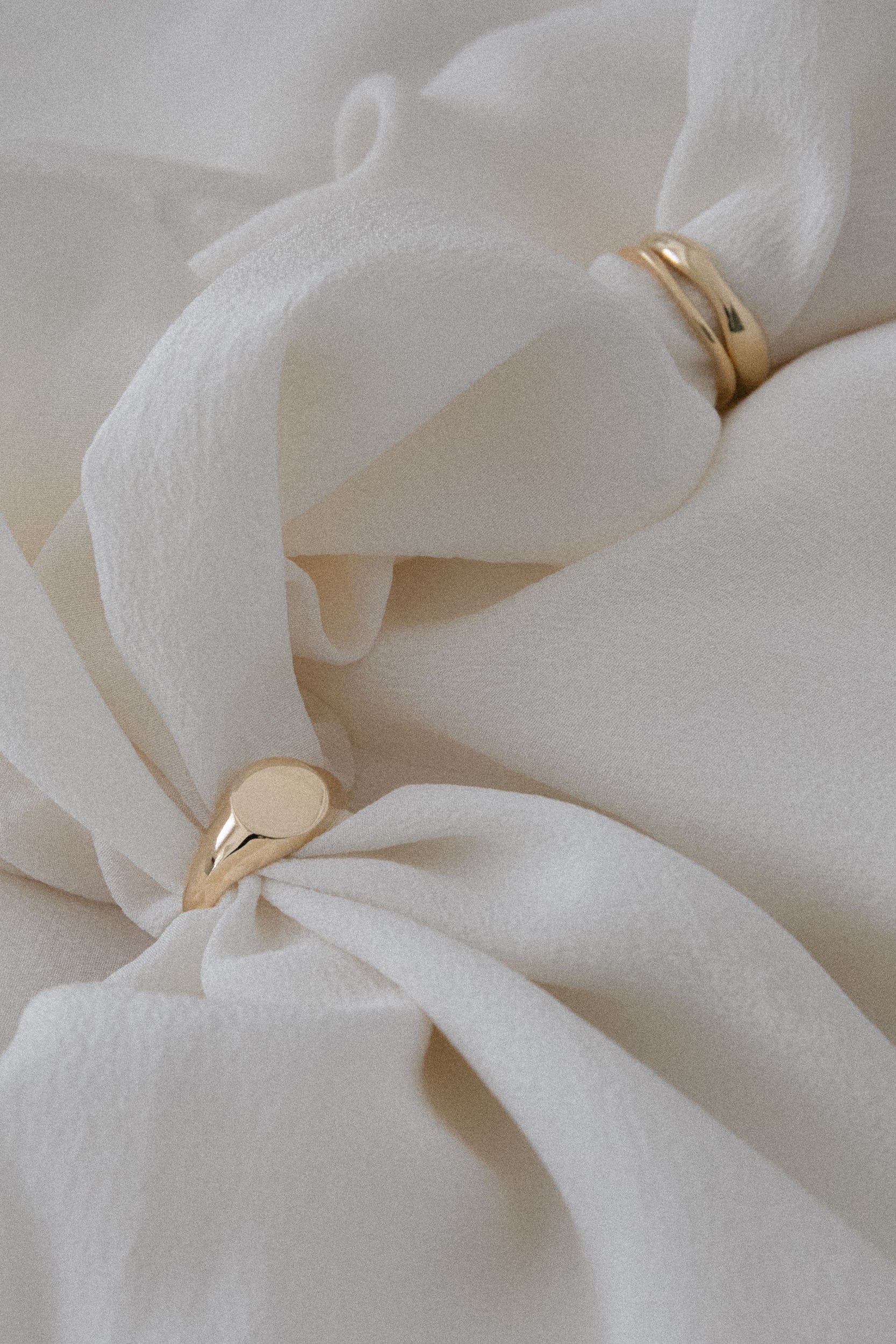
Gold Plating & Vermeil Standards
Knowing how many different types of jewellery are on the market it’s no wonder consumers are left confused, It's hard to know what all the jewellery lingo actually means... so I’m going to break down the different types & standards and giving you some valuable tips to ensure you choose quality pieces when your shopping for jewellery.

Solid Gold
Solid gold is considered the best and it comes with a hefty price tag for good reason, it is tarnish-resistant and will last forever. It maintains its original appearance for years, making it a worthwhile investment.
Knowing a few basic facts about gold can help when shopping for jewellery:
- When shopping always look for hallmark stamps on gold, these are a legal requirement.
- The higher the karat, the more gold the piece contains (also the more yellow it appears)
- Gold is a relativity 'soft’ metal - For everyday wear, we would recommend a lower kart - 9k, 14k, 18k, Gold
Gold Vermeil
Vermeil is a high-quality alternative to solid gold. It’s essentially the next best thing. Developed in France in the 18th century, it is a technique that provides a similar appearance to solid gold but at a more affordable price point. Vermeil has specific standards and is different from regular ‘gold plated jewellery’ as to be legally called ‘vermeil’ it has to comply with US standards:
- The base metal must be pure silver or 925 sterling silver.
- The gold plate must be 2.5 microns thick or higher.
- Gold karat must be 10k or higher.
The beauty of gold vermeil is it takes the guesswork out of shopping in the demi-fine category, as these guidelines are in place to ensure quality.

Gold Plate:
‘Gold-plated’ It's the most common and vaguest term used in jewellery today and my favourite topic to discuss! There are some really great gold-plated options out there, but be cautious as not all gold-plated jewellery is created equal as there are no industry guidelines.
The durability of the piece depends on the base metal, the thickness of the gold plate and the gold karat.
When shopping for gold-plated jewellery ensure you ask:

What the base metal is:
This will determine the overall durability of the piece - Sterling silver is best, but brass is still a great option, anything else maybe treads with caution.
How thick the gold layer is:
Unfortunately just by looking at a piece you can’t tell the thickness so ask for guidance here. The average gold-plated piece only has 0.5 microns of gold plate, but ideally, 2.5 microns and over is best.
What Karat Gold is used.
Not only does the karat of gold determine the colour, but it also impacts the durability of the piece of jewellery. Look for 18k gold plate or lower. It's a harder gold so in theory will wear better and last longer.
Vermeil vs Gold Plate - a comparison
|
Variables |
Vermeil |
Gold plated |
|
Base metal |
Must be sterling silver or silver |
Any (usually brass, zinc, tin or any combination of these) |
|
Karat of gold |
Must be 10k or higher |
Any karat |
|
Thickness of gold plate |
Minimum of 2.5 Microns |
Any (the thickness of gold is not measured on gold plate) |
No matter what type or finish of jewellery you purchase, regular cleaning, maintenance and storing it correctly will prolong its lifespan.
I like to say, think of your jewellery like a vintage Gucci handbag (or a 1979 Dodge Charger), that baby needs maintenance.
Nina x

